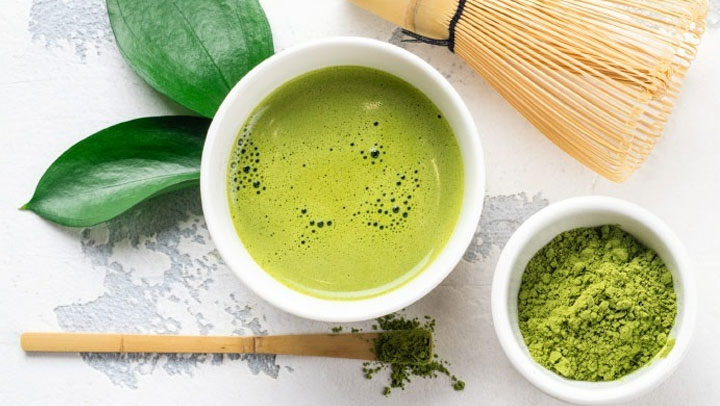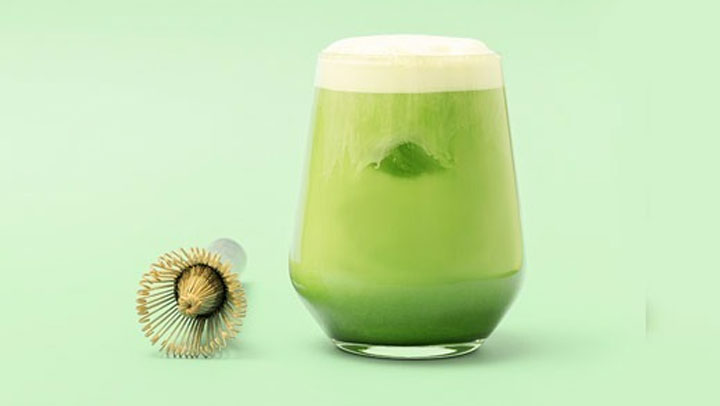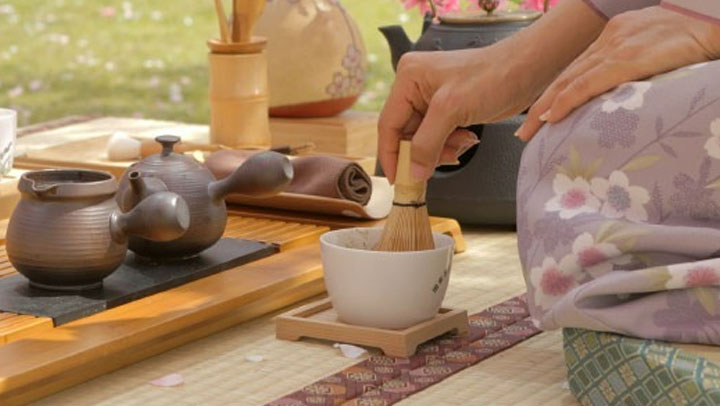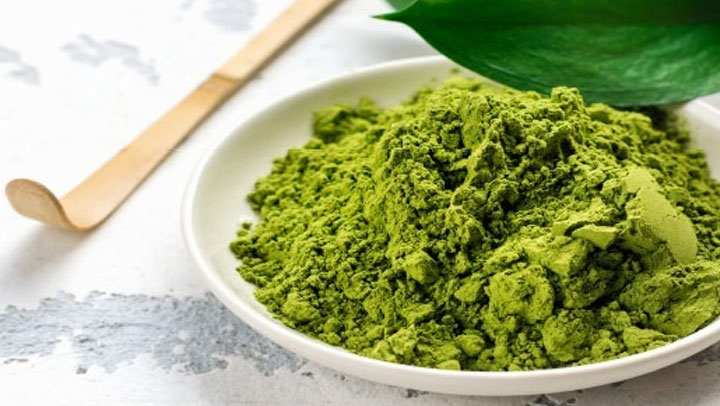
/>
How It's Made: Matcha
Oct 13th 2021
International Tea Importers
How It's Made: Matcha
By:International Tea Importers - 03/10/2021

The Japanese have consumed Matcha for centuries, and the beverage is still an intrinsic part of their identities today. There are many stories and legends about Matcha, but what is the truth? What does history say about this ancient beverage?
Today’s blog will explore the history behind this traditional beverage: from how it's made to its significance in Japanese society. Discover with us what makes Matcha so unique for Japanese society.
What is Matcha?
Matcha is a type of green tea that has been around for centuries. It's even said to be the oldest form of tea in the world. Matcha is the powdered processed green tea used in traditional Japanese tea ceremonies. It has an earthy taste and can be mixed with water for a refreshing drink or added to desserts like ice cream.

History of Matcha
It is difficult to pinpoint precisely when and where Matcha was first discovered because extensive research suggests that tea plants have existed all over Asia since ancient times.
Green tea has a long and complex history, dating back to when tea leaves were steamed and compressed into bricks during the Tang Dynasty (618–907). It also has roots in the Song Dynasty (960-1279), when Buddhist monks consumed tea as a part of their daily diet. Making powdered tea from dried tea leaves started in the 12th century, when the steam-prepared dried leaves were used to prepare Matcha.
Afterward, Buddhism continued to spread throughout East Asia, taking Green Tea along with it until Japan experienced an influx 300 years later when Myoan Eisai, a Buddhist monk, returned home after visiting China's Song Shan Temple. Eisai brought back with him the Zen Buddhist methods of preparing powdered green tea.

Matcha Origin
Matcha grew in popularity after being used by the Zen Buddhist monks to help with mental clarity and focus during long hours of meditation. Today most people refer to Myoan Eisai as "the father of Japanese green tea". Not only did he popularize Matcha, but he also brought back seeds he had received at the Song Shan Temple and agricultural techniques used by Buddhist monks to cultivate the highest quality tea leaves.
Since then, the history of Matcha in Japan has been filled with many notable events, most significant was when it became integrated into Japanese Tea Ceremonies during the 15th century.
Another major event in the history of tea was when Sen no Rikyū introduced his way of making tea (Wabi cha) during Japan's Azuchi-Momoyama period (1568 – 1603).
Many believe that Rikyú's philosophy influenced how the modern Chanoyu or "Japanese Tea Ceremony" is still practiced today. He emphasized simplicity, harmony, and respect for nature through every step involved in preparing Matcha
Today, many people believe that Sen no Rikyú is responsible for making Matcha as popular as it is now all over Japan. However, the Matcha tea ceremony in Japan is not attributed to him.
It then became a popular drink among Samurai warrior, Toyotomi Hideyoshi, - but even then, there were strict rules about consuming this particular tea: only high-ranking officials and priests were allowed to enjoy the tea!
In 1738, tea masters (Sohen Nagatani) began grinding green teas by hand to create a fine powder instead of whisking them like they used to do before. This was done because powdered teas are more accessible and easier for people to make, which is why this method spread throughout the following generations.

Widely Known Matcha
In the late 1800s, it became more prevalent among people looking for a healthier alternative to coffee or black tea. Matcha is made from finely ground high-quality tea leaves mixed with water until it becomes thick and frothy. Green Teas such as Matcha are rich in nutrients and antioxidants as well as beneficial for health.
Today both methods exist: some producers prefer using machines while others insist on doing things traditionally – that's how much respect there is towards traditional values and practices surrounding Matcha!
How Matcha is made: Production Process
Matcha, the finely ground powder traditionally used in Japanese tea ceremonies and as a ceremonial offering, is made from green tea leaves that people consume to get the energy they need throughout their day. It is made from specially grown and processed tea leaves. Here, we will explore the steps involved in making Matcha from start to finish.
Shade-grown for five to six weeks before harvest
The Matcha production starts with growing the tea plants under shade cloths or covered by bamboo mats for up to 6 weeks before being harvested. The shading process helps protect the leaves so that they don't receive direct sunlight, making them more flavorful and aromatic. This method also enhances their nutritional value! This leads to more chlorophyll in tea leaves resulting in its lush green color.
Hand Picked
After the tea leaves are grown, the youngest tea leaves are harvested by hand and sorted for quality. These young, green tea leaves create matcha powder which is known to be more expensive than many other types of green tea but has significant health benefits and taste! The finest quality comes from the first harvest, which occurs 40-45 days before the second harvest.
Steamed and Air-dried
The harvested leaves are then steamed in large vats for 20 seconds to stop the natural oxidation process that would otherwise turn the leaves brown. This also enables them to hold on tightly to the amino acids and other nutritional components in it before passing through a blower where moisture condensation is eliminated along with any stems or leaves left over after processing.
De-stemmed and Graded
These tea leaves undergo further processing to remove any remaining stems or other particles. From there, the tea leaves go through a process of sorting and grading. After this step is complete, they can be stored in the refrigerated rooms.
Grounded Matcha
After being roughly chopped by hand or by a machine, the tea leaves are put through a stone mill or grinder, turning them into a fine powder or what we now as Matcha. As a final step, matcha tea powder is vacuum-packed and then stored until it's ready to ship.
Matcha is a fantastic superfood that offers numerous health benefits. Matcha green tea powder is made from whole ground, high-quality leaves. It contains 137 times more antioxidants than your average cup of brewed black tea. It also provides a natural energy boost because the caffeine content in Matcha is much lower than coffee or other caffeinated beverages. With all these benefits, what's stopping you from drinking this magical drink?
Tea BlogGrades Of TeaBy:International Tea Importers -22/09/2021 Share Share In the world of tea there are a variety of acronyms and names regarding grades of tea. These can range from Black tea to Darjeeling flushes, as well as to Chinese teas [...]
How To Make The Perfect Cup of Tea Have you ever stopped to think about how you go about making a cup of tea? How long to let it steep or even how hot the water needs to be? Every tea requires its own steeping process, something most of the population in the [...]
Tea BlogSummer Iced Tea Brewing TipsBy:Siobhan Nasby -25/07/2021 Share ShareOn a hot summer’s day nothing sounds better than a nice, cold glass of iced tea. Better yet, how does a chilled glass of a cold brew iced tea sound? As we continue [...]
Tea BlogWho is ITI:Let us Re-Introduce OurselvesBy:Siobhan Nasby 13/07/2021 Share ShareOur origin story here at ITI starts off rather humbly. In the year of 1992 our founder Devan Shah started the company in his father-in-law’s garage, at this time the company was [...]





 />
/>